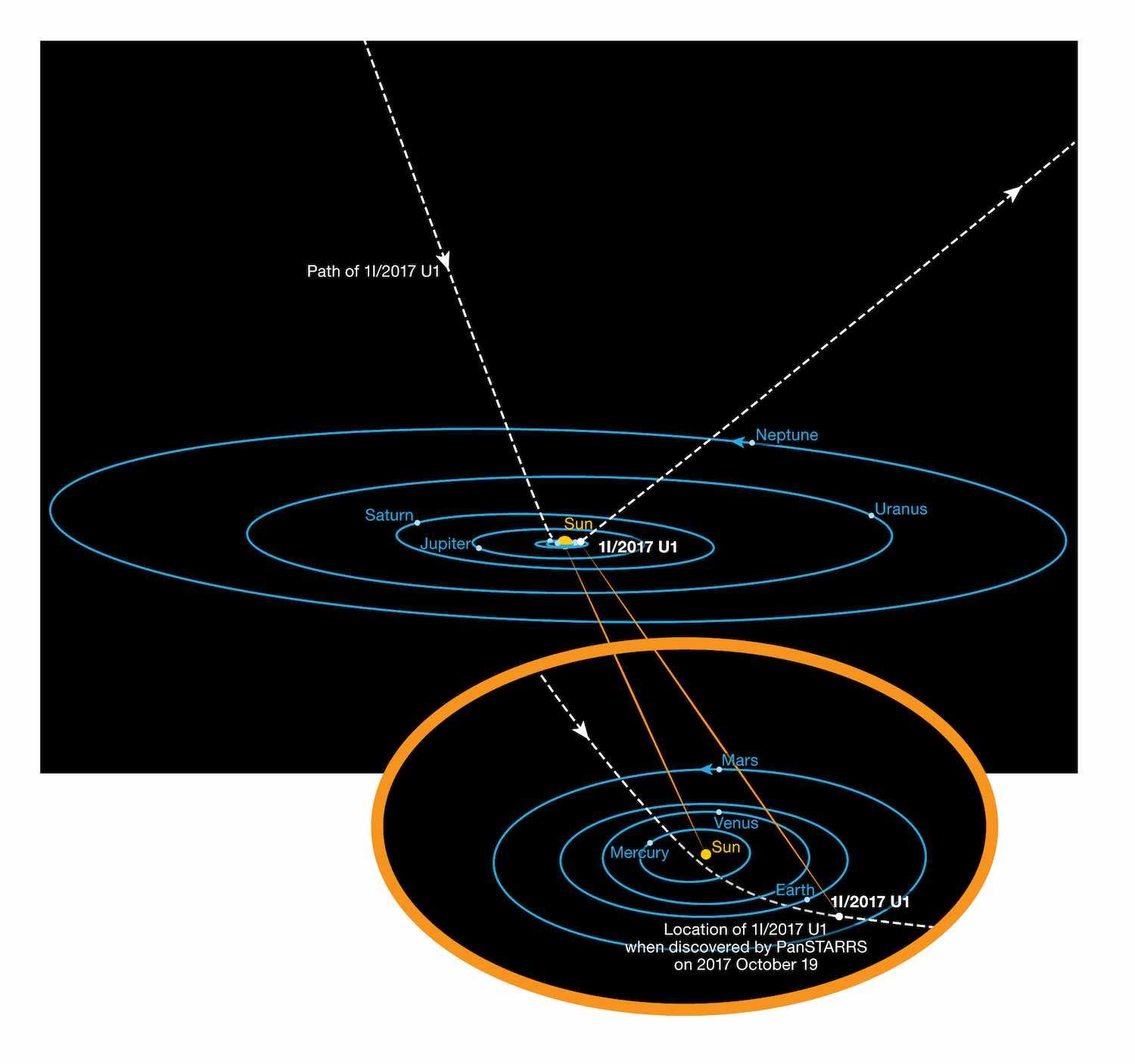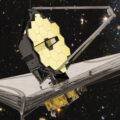In a new paper published today in Nature, Jennifer Bergner and Darryl Seligman suggest that the peculiar acceleration observed by the first known interstellar object `Oumuamua, can be explained if `Oumuamua was made of water ice which was partly dissociated into hydrogen by cosmic-rays along its interstellar journey. In the abstract of the paper, the authors admit that past models involving a pure hydrogen iceberg or a pure nitrogen iceberg do not work due to theoretical or observational inconsistencies.
In fact, the hydrogen iceberg model was proposed in a previous 2020 paper by Darryl Seligman himself. A few months later, I wrote a paper with Thiem Hoang, showing that heating by interstellar starlight would destroy hydrogen icebergs too quickly and not allow them to reach the solar system from their likely formation sites of giant molecular clouds.
In the new paper, Bergner and Seligman also point out that sublimation of a pure water iceberg cannot provide the full acceleration of `Oumuamua, as observed by Marco Micheli and collaborators in a 2018 Nature paper. Since the observed acceleration declined smoothly in inverse proportion to distance squared from the Sun, I suggested a few months later in a paper with my former postdoc Shmuel Bialy that `Oumuamua was a thin membrane, pushed by sunlight. Since nature does not make light sails, I suggested in follow-up papers and my book Extraterrestrial that `Oumuamua was possibly produced by an extraterrestrial technological civilization. Most recently, I proposed in a newly published paper that this form of thin space trash could represent a piece from a broken Dyson sphere, which was damaged by asteroid impacts.
Since Bergner and Seligman admit that a pure water iceberg or a pure hydrogen iceberg are not viable models for `Oumuamua, it is unclear how mixing two failing models would make a successful solution. In particular, when hydrogen evaporates from a water iceberg, it would give less kick to the water than to a pure hydrogen iceberg because of the higher molecular weight of water. Moreover, if hydrogen evaporates easily from water ice, then it would not survive the journey, just like in the case of a pure hydrogen iceberg. These issues are not addressed in the new paper.
Another concern is that comets often show jitter from jets as a result of uneven sublimation of ice on their surface, as well as a substantial evolution in their spin period as they evaporate. In contrast, none of these was evident in the case of `Oumuamua. This point was highlighted in a 2018 paper by Roman Rafikov, shedding doubt on a cometary origin from `Oumuamua’s excess acceleration away from the Sun.
Bergner and Seligman suggest that their proposed model is generic and that all icy bodies exposed to interstellar cosmic rays should show water conversion to hydrogen. However, we already know of an icy object from interstellar space: it is the first interstellar comet, 2I/Borisov, discovered in 2019 by the amateur astronomer Gennady Borisov. This object appeared like a familiar comet from the Solar system with a giant cometary tail. `Oumuamua cannot be a typical comet-like 2I/Borisov since there was no evidence for any carbon-based molecules or dust around `Oumuamua, based on deep infrared observations by the Spitzer Space Telescope. If the authors were correct and 1I/`Oumuamua was a typical water ice comet exposed to cosmic rays, then the interstellar object 2I/Borisov would not have appeared to have its obvious cometary tail.
In fact, long-period comets from the solar system’s Oort cloud are exposed to the same cosmic-ray environment as interstellar objects like `Oumuamua because they are outside the heliosphere where the solar wind is stopped from protecting them. Yet, Oort cloud comets do show the familiar cometary tails. Arguing that a generic icy comet is without a tail is like saying an elephant is a generic zebra, just without showing its stripes. Of course, there could be exceptions where the evaporation rate is low. Still, those would not account for the excess acceleration of `Oumuamua, which requires that at least a tenth of the object’s mass be lost in a tail when the acceleration was observed.
Interestingly, in September 2020, the same telescope that discovered `Oumuamua, Pan-STARRS in Hawaii, observed another object exhibiting a push away from the Sun as a result of the reflection of sunlight without a cometary tail. This object, named 2020 SO, ended up being a rocket booster made of thin walls of stainless steel, launched by NASA in 1966.
To understand how much mass needs to evaporate from `Oumuamua, let us go through some numbers. Cometary evaporation leads to the rocket effect, through which the momentum of the evaporated gas toward the Sun is pushing the object away from the Sun. This is the same mechanism that pushes rockets or jet planes.
The new model requires hydrogen to account for a significant fraction of the total mass and most of it to evaporate. When `Oumuamua was observed, the temperature of the evaporated hydrogen was of order a hundred degrees Kelvin above absolute zero. The speed of the evaporated hydrogen cannot be larger than the thermal speed of a hydrogen molecule at that temperature, about a kilometer per second, which is a few percent of the speed of `Oumuamua close to Earth.
The atomic mass of oxygen is 16 times that of hydrogen, meaning that water (two hydrogen atoms per oxygen atom) carries eight times more mass than the hydrogen mass in it. Therefore, if we assume in the most favorable case that all the hydrogen evaporated from `Oumuamua, the velocity kick of the remnant object would amount to a few percent divided by eight, which is 0.3% of `Oumuamua’s speed near Earth.
The observed push of `Oumumua was about 0.1% of `Oumuamua’s speed. This implies that a third of all the available hydrogen in the water iceberg must evaporate in order to give `Oumuamua the observed kick of 0.1% of its speed.
Given that `Oumuamua was the size of a football field, it is unclear how a third of its total hydrogen mass can escape from a depth of tens of meters to its surface without pushing out water molecules along the way. Indeed, familiar comets show water vapor with dust. `Oumuamua cannot be a typical comet because it did not look like a typical comet.


As I summarized in a paper published in 2021, `Oumuamua showed other anomalies beyond its acceleration. The variation by a factor of ten in the brightness of reflected sunlight as it was tumbling every 8 hours, implied that it had an extreme shape, most likely disk-like and not cigar-like, according to a detailed analysis of `Oumuamua’s light curve in a 2019 paper by Sergey Mashchenko. This disk-like shape, favored at the 91% confidence level by Mashchenko’s analysis, is consistent with the flat membrane interpretation.
Moreover, `Oumuamua originated close to the Local Standard of Rest, the frame-of-reference averaging over the random motion of all stars in the vicinity of the Sun. According to a 2017 paper by Eric Mamajek, “less than 1 in 500 field stars in the solar neighborhood would have a velocity so close to the median velocity” of this frame relative to the Sun, making `Oumuamua extremely rare in its initial velocity before the Sun kicked it.


Altogether, it is fantastic to see the continuing interest within the mainstream of astronomy to explain the anomalous acceleration of `Oumuamua more than five years after its discovery. It is good to have alternative models at hand as we search for the next `Oumuamua with the forthcoming Legacy Survey of Space and Time (LSST) on the Vera C. Rubin Observatory.
The fundamental question that I am curious about is whether `Oumuamua was natural or artificial in origin. If the next `Oumuamua appears artificial, then we might feel like homeowners who identified all objects in their backyard as rocks, including those tennis balls which originated from the cosmic street and were thrown by our neighbors.
Sometimes, I feel like the kid in the Hans-Christian Andersen folktale who suggested that “the emperor has no clothes,” while the “adults” watching the procession insisted that the emperor is dressed in fancy clothing. In my case, the emperor is `Oumuamua, and the clothes are its invisible cometary tail.
Avi Loeb is the head of the Galileo Project, founding director of Harvard University’s – Black Hole Initiative, director of the Institute for Theory and Computation at the Harvard-Smithsonian Center for Astrophysics, and the former chair of the astronomy department at Harvard University (2011-2020). He chairs the advisory board for the Breakthrough Starshot project, and is a former member of the President’s Council of Advisors onScience and Technology and a former chair of the Board on Physics and Astronomy of the National Academies. He is the bestselling author of “Extraterrestrial: The First Sign of Intelligent Life Beyond Earth” and a co-author of the textbook “Life in the Cosmos”, both published in 2021. His new book, titled “Interstellar”, is scheduled for publication in August 2023.

